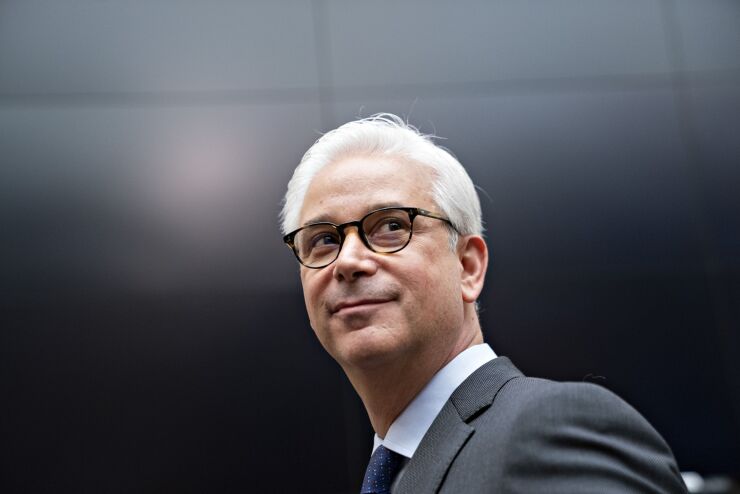Wells Fargo is facing a fresh round of questions about its ongoing regulatory troubles in the wake of a recent setback that fostered doubts about the bank’s progress in satisfying its regulators.
During the bank’s third-quarter earnings call, analysts peppered CEO Charlie Scharf with queries about how quickly the bank may resolve regulatory actions over past consumer abuses.
In September, the Office of the Comptroller of the Currency

“What do you need to do differently, especially as a management team?” JPMorgan Chase analyst Vivek Juneja asked Scharf. He was seeking — but did not receive — a more specific timeline than the “several years” that Scharf said it may take for Wells to “close the remaining gaps.”
Wells Fargo is operating under several regulatory consent orders, most notably an asset cap the Federal Reserve Board imposed in 2018. The cap prevents the San Francisco megabank from growing beyond roughly $1.95 trillion of assets.
Deutsche Bank analyst Matt O’Connor asked Scharf whether investors should expect another “speed bump or potential landmine” in the near future.
Scharf, who joined Wells Fargo in 2019, responded that the bank is focused on ensuring that “we minimize the likelihood of a landmine.” But he repeated a remark he’s made previously — that the bank’s progress may be accompanied by negative developments.
Earlier in the call, Scharf noted that he has overhauled Wells Fargo’s leadership team, and he highlighted the recent expiration of a 2016 consent order with the Consumer Financial Protection Bureau over retail sales practices.
“I believe we're making meaningful progress, and I remain confident in our ability to close the remaining gaps over the next several years,” Scharf said. “Having said that, it continues to be the case that we are likely to have setbacks along the way.”
Wells Fargo is seeking to take advantage of strengthening loan demand, and Scharf downplayed the impact that the Fed’s asset cap could have on the bank’s ability to do so.
Wells is “as open for business as anyone on the asset side” of the balance sheet, which the bank can adjust to ensure it is able to meet clients’ borrowing needs, he said.
“When you're out, you know, hustling for business, we're certainly able to fulfill their needs,” Scharf said, referring to both consumer and corporate clients.
In response to a question about whether the Fed’s asset cap might affect Wells Fargo’s lending aspirations, Chief Financial Officer Michael Santomassimo said the bank has “plenty of capacity to grow” by removing cash that is currently sitting at the Fed or by selling securities if needed.
In remarks last month, Fed Chair Jerome Powell declined to give a timeline on ending Wells Fargo’s asset cap, telling reporters that the restrictions will stay in place until the bank can “fix its widespread and pervasive problems.”
Kenneth Leon, director of equity research at CFRA, said that he is optimistic about what he views as Wells Fargo’s “turnaround story,” though he noted that the asset cap remains a major question mark.
“They’re beginning to change culture, they have senior leaders that know what they’re doing — most of them came from the outside,” Leon said in an interview. “Now they’ve got to spread the word and get execution from middle management. That takes time.”
Wells Fargo received mostly positive marks from analysts on its third-quarter financial results, which reflected both progress on its cost-cutting initiative and a slight rebound in loan growth compared to the prior quarter.
Wells Fargo’s loan book grew larger for the first time since the first quarter of 2020. The bank ended the third quarter with $862.8 billion in total loans, roughly a $10.5 billion increase from the prior quarter.
Banks have been struggling to increase their loan balances during the pandemic, partly due to larger savings and government relief funds that have enabled consumers to reduce their credit lines.
Wells reported net income of $5.1 billion, or $1.17 per share, in the quarter, up from $3.2 billion, or 70 cents per share, in the same period last year. The results were boosted by a $1.7 billion decrease in the company’s allowance for credit losses.





